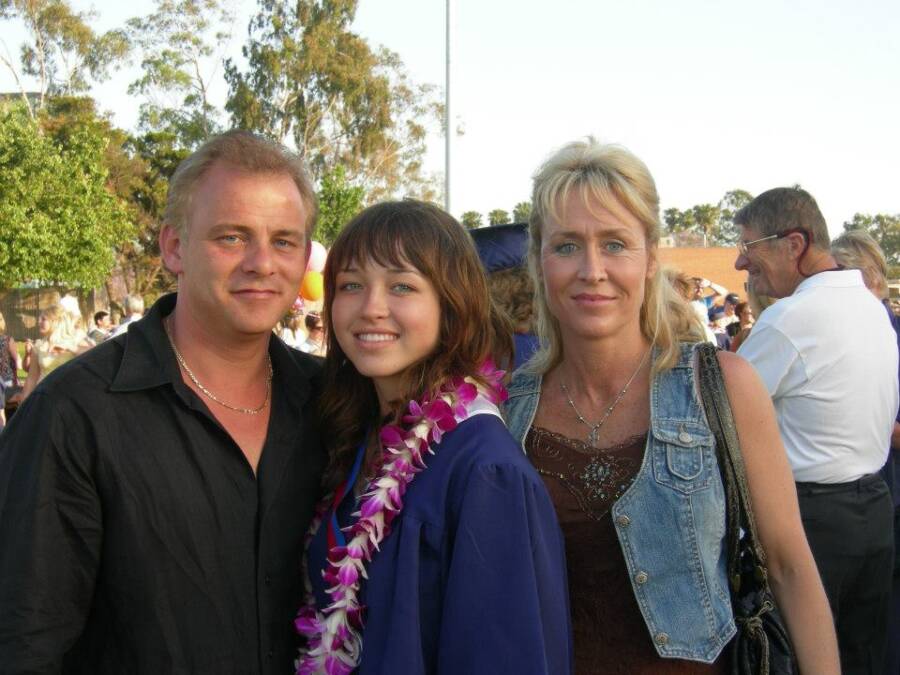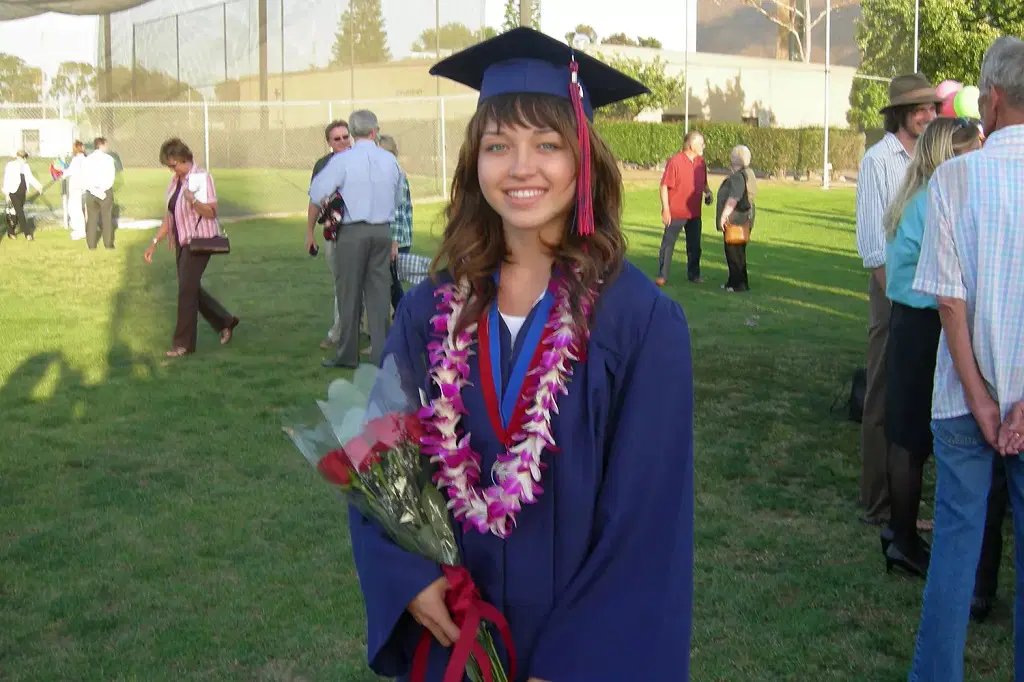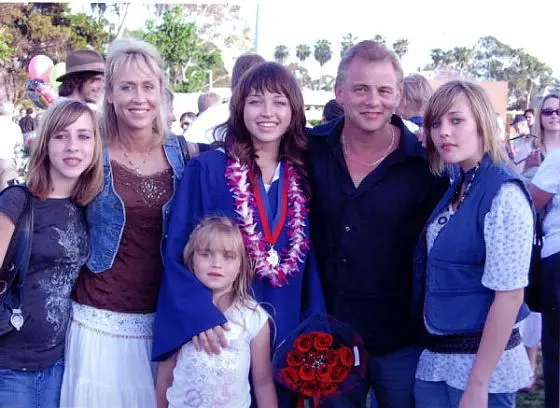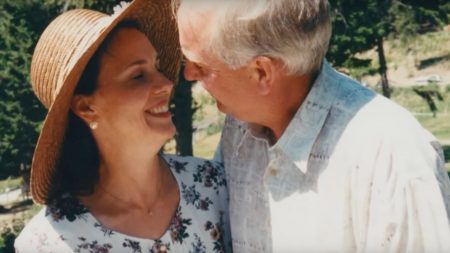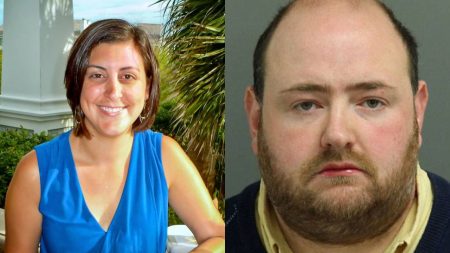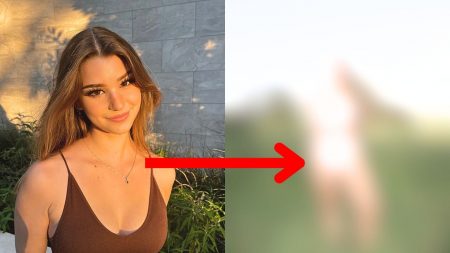The death of 18-year-old Nicole “Nikki” Catsouras in a high-speed car crash on October 31, 2006, shocked her family and the local community.
But it was the unauthorized leak and viral spread of graphic photos from the crash scene that compounded the family’s grief and trauma.
Nikki’s parents, Christos Catsouras and Lesli Catsouras have been seeking justice over the privacy violation and harassment from internet trolls for over 15 years.
In this article, we will chronicle the full story of that fateful Halloween crash, the turmoil Nikki’s family faced afterward, and the lasting implications of the leaked photographs controversy.
Here is Section II (Details of the Fatal Crash) for the outline:
Table of Contents
- 1. Details of the Fatal Crash of Nikki Catsouras
- 1.1 Circumstances Leading to the Accident of Nikki Catsouras
- 1.2 The Fatal Collision
- 1.3 Autopsy and Toxicology Results of Nikki Catsouras Death
- 2. Aftermath of the Crash
- 2.1 Photography of the Collision Aftermath
- 2.2 Nikki Catsouras Death Photos Leaked Online
- 2.3 Impacts on the Catsouras Family
- 3. Legal Battle Over the Photos of Nikki Catsouras Death
- 3.1 Initial Lawsuit and Internal Investigation of Nikki Catsouras
- 3.2 Appeals Ruling and Scathing Rebuke
- 3.3 Final Settlement and Ongoing Impact
- 4. Impact and Lessons
- 4.1 Raising Awareness of Online Harassment
- 4.2 Establishing New Legal Precedents
- 4.3 Persisting Problems and Needed Reforms
- 4.4 A Cautionary Tale About Online Ethics
- 5. Conclusion
- 6. FAQs
Details of the Fatal Crash of Nikki Catsouras
Circumstances Leading to the Accident of Nikki Catsouras
On October 31, 2006, Nikki Catsouras had lunch with her parents Christos and Lesli at their family home in Ladera Ranch, California. Afterward, her father left for work while her mother remained at home.
Approximately 10 minutes later, Nikki’s mother witnessed her backing her father’s Porsche 911 Carrera out of the driveway and speeding off down the road. Nikki did not have permission to drive the vehicle.
Upon seeing this, Nikki’s mother immediately contacted her husband Christos, who turned his car around and began searching for his daughter.
He also called 911 but was put on hold. By the time the dispatcher came back on the line, Christos was informed that Nikki had crashed.
The Fatal Collision
On October 31, 2006, at around 1:38 pm, 18-year-old Nikki Catsouras was traveling on Highway 241, a local toll road in Lake Forest, California. She was driving her father’s Porsche 911 Carrera at over 100 mph.
As Nikki attempted to pass a slower-moving Honda Civic on the right, she clipped the vehicle and subsequently lost control of the Porsche.
The car crossed over the highway’s broad median into oncoming traffic. Nikki’s vehicle then collided head-on at high speed with an unmanned concrete toll booth near the Alton Parkway interchange.
Nikki Catsouras was killed instantly on impact in the devastating crash. The collision was so horrific that even first responders were deeply disturbed by the extent of her injuries.
Autopsy and Toxicology Results of Nikki Catsouras Death
An autopsy conducted after the accident revealed that Nikki had traces of cocaine in her system at the time of the crash. However, no alcohol was detected.
Nikki’s parents later disclosed that she had begun occasionally using cocaine during the summer of 2005. She had also apparently consumed the drug the night prior to getting behind the wheel of her father’s Porsche.
Nikki’s judgment was likely affected by the presence of drugs on that Halloween afternoon.
However, this doesn’t excuse her reckless choice to drive her father’s car without permission and at dangerously high speeds on a public highway.
The drug’s influence does offer some insight into her unusual behavior as a teenager.
Ultimately, a combination of destructive choices and unfortunate circumstances aligned to create the tragedy that happened on October 31, 2006. No singular factor diminishes the sadness of a young life cut short.
Aftermath of the Crash

Photography of the Collision Aftermath
As part of standard procedure, officers from the California Highway Patrol (CHP) photographed the crash scene following Nikki Catsouras’ accident.
The carnage depicted in the images was incredibly graphic due to the devastating nature of the collision.
Out of respect for the deceased, Nikki’s grieving parents were not even allowed to identify their daughter’s body.
However, the Catsouras family would soon be subjected to the disturbing images taken by authorities at the crash site.
Nikki Catsouras Death Photos Leaked Online
Two CHP employees, officers Aaron Reich and Thomas O’Donnell, admitted to improperly releasing photographs of Nikki Catsouras’ fatal crash.
O’Donnell claimed he had only forwarded the images to his personal email account for later viewing. Reich confessed he had sent the pictures to four other individuals.
Regardless of intent, this breach of protocol set off a viral spread of sensitive photographs across the internet. Nikki became posthumously known as “Porsche Girl” as the images proliferated.
Impacts on the Catsouras Family
The Catsouras family was soon bombarded with anonymous emails containing the leaked crash scene photographs of their daughter. Some messages even included cruel captions mocking Nikki’s death.
People sent copies of the photos to the Catsouras family anonymously, using misleading subject headers. In one instance, they captioned the photo sent to the father with the words ‘Woohoo Daddy! Hey Daddy, I’m still alive.’
This online harassment forced the Catsouras family to withdraw from internet use entirely. They also made the difficult decision to homeschool their youngest daughter, concerned she may be taunted by the disturbing images of her deceased sister.
Seeing Nikki’s memory desecrated online added immeasurable anguish to the family’s grief over their tragic loss. It ultimately set them on a quest for justice.
Legal Battle Over the Photos of Nikki Catsouras Death
Initial Lawsuit and Internal Investigation of Nikki Catsouras
The Catsouras family filed a lawsuit against the California Highway Patrol (CHP) and the two officers responsible for leaking the photos – Aaron Reich and Thomas O’Donnell.
Initially, a judge ruled the case could proceed against the defendants. However, an internal CHP investigation found that department policies had been violated.
O’Donnell received a 25-day suspension without pay, and Reich resigned shortly thereafter, citing “unrelated reasons,” according to his attorney.
The CHP issued a formal apology to the Catsouras family for the actions of their employees. But with the individual officers removed as defendants, the judge dismissed the case against the agency itself.
Appeals Ruling and Scathing Rebuke
In 2010, a California appeals court revived the Catsouras’ legal case by ruling they could sue for invasion of privacy and emotional distress on behalf of their deceased daughter.
The strongly worded opinion condemned the behavior of the officers involved:
“We rely upon the CHP to protect and serve the public. It is antithetical to that expectation for the CHP to inflict harm upon us by making the ravaged remains of our loved ones the subject of Internet sensationalism … O’Donnell and Reich owed the plaintiffs a duty not to exploit CHP-acquired evidence in such a manner as to place them at foreseeable risk of grave emotional distress.”
Source
This precedent-setting decision established new rights for families of the deceased when confidential photos are leaked publicly.
Final Settlement and Ongoing Impact
After several more years of litigation, in January 2012 the CHP reached a settlement with the Catsouras family for approximately $2.375 million in damages.
CHP spokesman Fran Clader said, “No amount of money can compensate for the pain the Catsouras family has suffered. We have reached a resolution with the family to save substantial costs of continued litigation and a jury trial. It is our hope that with this legal issue resolved, the Catsouras family can receive some closure.”
While the settlement provided some relief, both parties acknowledged it was impossible to fully remove the images from the internet. Nevertheless, the case sent a strong message about online privacy rights.
Nikki’s ordeal brought needed attention to the human toll of spreading sensitive content online without regard for consequences. It marked an important step toward broader reforms granting families more control over images of deceased loved ones.
Impact and Lessons
Raising Awareness of Online Harassment
The controversy over the leaked photographs of Nikki Catsouras brought much-needed attention to the growing issue of using sensitive images to harass people online.
While the internet provides valuable connectivity, Nikki’s case highlighted the dark side of unfettered access to content and anonymity in cyberspace. Her family’s distress demonstrated the real world consequences of virtual actions.
By bravely sharing their experience, the Catsouras family helped advance public understanding of online harassment and the struggle to combat it.
Establishing New Legal Precedents
The lawsuits arising from Nikki’s death established important new case law upholding privacy rights for deceased individuals and their families.
In particular, the 2010 California Appeals Court ruling was seminal in permitting families to sue for emotional distress from leaked photos of loved ones who have passed away. This set a precedent followed by other courts nationwide.
While the law continues evolving in this complex arena, the Catsouras case marked a significant step forward in allowing legal recourse for families like theirs who have suffered harm from the viral spread of sensitive images.
Persisting Problems and Needed Reforms
Despite increased awareness and precedents set through their legal battles, the Catsouras family noted that similar incidents keep occurring.
Other high-profile cases, such as Vanessa Bryant’s lawsuit over crash site photos of her late husband Kobe and daughter, demonstrate the persisting problem. It highlights the need for further reforms.
Though progress has been made, more work remains to implement stronger protections, enforcement, and training around handling and distributing sensitive photos.
A Cautionary Tale About Online Ethics
At its core, Nikki Catsouras’ story cautions about the human toll that careless online actions can have. It reminds us that behind content are real people who can face real consequences.
Her case revealed how quickly digital misdeeds can spiral out of control. It emphasized the importance of questioning motivations before spreading potentially harmful information online.
As Nikki’s father Christos stated:
“Before you hit send — whether it’s a text, an email, whatever source of digital thing it is — think to yourself, ‘Can this affect anybody’s life? Can it hurt somebody’s feelings?'”
This sage advice serves as a vital takeaway from the Catsouras family’s hard-won wisdom through their traumatic ordeal.
Conclusion
The case of Nikki Catsouras stands as a tragic cautionary tale about the unforeseen consequences of leaking graphic content online. Her disturbing death in a high-speed car crash was just the beginning of her family’s nightmare.
The unauthorized release and viral spread of grisly accident scene photographs compounded the Catsouras family’s grief. Their brave decision to share their story highlighted vital lessons about online ethics and empathy.
Through an arduous legal battle, they established important new privacy protections for deceased individuals and their loved ones. However, their experience shows more work remains to prevent similar harm.
At its core, Nikki’s heartbreaking saga reminds us that we all must be more thoughtful digital citizens. Before clicking send or share, we should consider carefully whether the content could hurt someone already suffering—like a grieving family.
As we navigate the endless opportunities and pitfalls of the online world, letting human compassion guide our actions can help foster a kinder internet for all.
For more true crime stories that delve into the human impact of tragic events, read:
- Full Story of John Thomas Sweeney Who Killed Actress Dominique Dunne But Served Only Three and Half Years in Prison
- Yuka Takaoka Full Story: Real-Life Yandere Who Stabbed Her Boyfriend
- Kelly Ronahan Story Explained: Munchausen by Internet or a Misdiagnosis?
- Henry McCabe’s Disturbing Voicemail And Tragic Death Explained
FAQs
On October 31, 2006, 18-year-old Nikki Catsouras died in a high-speed car crash while driving her father’s Porsche 911 Carrera without permission on a California highway. She lost control of the vehicle at over 100 mph and collided head-on with a toll booth.
According to reports, Nikki was traveling at speeds in excess of 100 mph when the fatal accident occurred. As she attempted to pass another car on the highway, she clipped the vehicle and subsequently lost control of the Porsche.
By all accounts, it was uncharacteristic behavior for Nikki to take her father’s Porsche that day. She did not have permission to drive the vehicle and had never done so before. Her parents later disclosed she had traces of cocaine in her system, which likely impaired her judgment before the crash.
Nikki’s death itself gained little notoriety. However, she became posthumously known on the internet as “Porsche Girl” after graphic photos of her crash scene were leaked online by California Highway Patrol officers. The spread of these sensitive images sparked a major lawsuit over privacy rights by her family.
CHP officers took standard photographs of the accident scene. But two employees violated protocol by sharing the graphic images outside of work. This started a viral spread of the photos across the internet, compounding Nikki’s family’s grief. Her parents sued over the privacy violation, eventually settling for $2.37 million.
